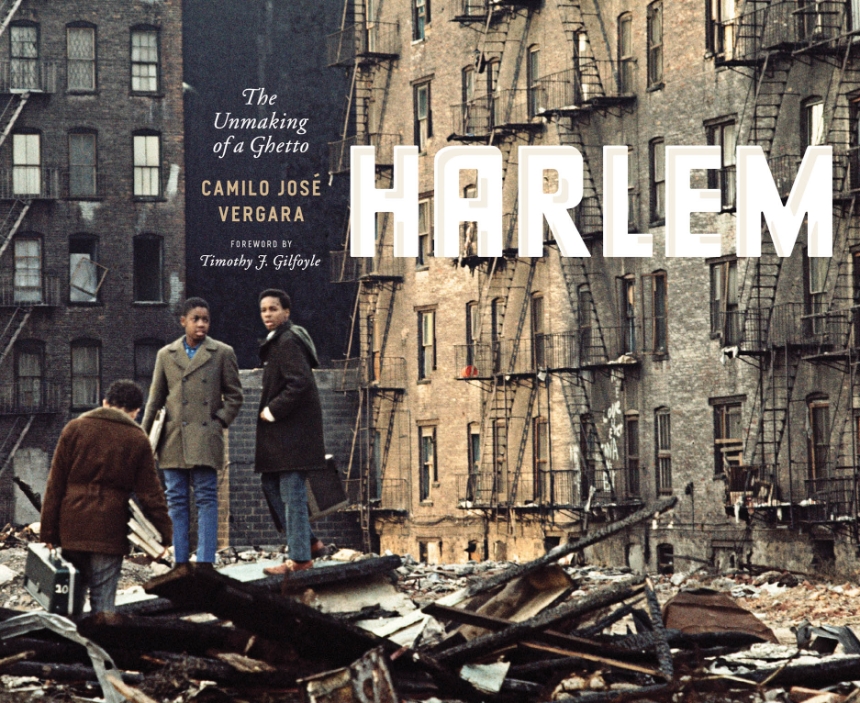Harlem
The Unmaking of a Ghetto
For more than a century, Harlem has been the epicenter of black America, the celebrated heart of African American life and culture—but it has also been a byword for the problems that have long plagued inner-city neighborhoods: poverty, crime, violence, disinvestment, and decay.
Photographer Camilo José Vergara has been chronicling the neighborhood for forty-three years, and Harlem: The Unmaking of a Ghetto is an unprecedented record of urban change. Vergara began his documentation of Harlem in the tradition of such masters as Helen Levitt and Aaron Siskind, and he later turned his focus on the neighborhood’s urban fabric, both the buildings that compose it and the life and culture embedded in them. By repeatedly returning to the same locations over the course of decades, Vergara is able to show us a community that is constantly changing—some areas declining, as longtime businesses give way to empty storefronts, graffiti, and garbage, while other areas gentrify, with corporate chain stores coming in to compete with the mom-and-pops. He also captures the ever-present street life of this densely populated neighborhood, from stoop gatherings to graffiti murals memorializing dead rappers to impersonators honoring Michael Jackson in front of the Apollo, as well as the growth of tourism and racial integration.
Woven throughout the images is Vergara’s own account of his project and his experience of living and working in Harlem. Taken together, his unforgettable words and images tell the story of how Harlem and its residents navigated the segregation, dereliction and slow recovery of the closing years of the twentieth century and the boom and racial integration of the twenty-first century. A deeply personal investigation, Harlem will take its place with the best portrayals of urban life.
269 pages | 268 color plates | 11 x 9 | © 2013
Historical Studies of Urban America
Art: American Art, Photography
History: American History, Urban History
Reviews
Table of Contents
FOREWORD
By Timothy Gilfoyle
INTRODUCTION
Street Photography of Harlem, Early 1970s
Since 1977, Exploring Harlem through Time-Lapse Photography
THE URBAN FABRIC
Many Harlems, One Cultural Capital of Black America
Lost Harlem
Globalization Takes Over: From Sugar Club to Global Church
Ruins and Semi-Ruins
Landmark Harlem and Harlem Landmarks
Memorialization
“Simply Magnificent”: The New Apartment Buildings of Harlem
The Projects: Unlikely Bastions Preserving Traditions
The Subway
Defenses
CULTURE
Harlem Walls: Graffiti, Memorials, Murals, and Advertisements
Religion
Parades, Celebrations, and Commemorations
“We Put Our Own Spin on Style”: Harlem Fashions
The African Presence in Harlem
Tourists in Search of Harlem’s Heyday
A Defiant Attitude
Lexington Avenue at East 125th Street: A Happening Intersection
Free Food
What Mean These Stones?
AFTERWORD
In Harlem Wandering from Street to Street
ACKNOWLEDGMENTS
NOTES
BIBLIOGRAPHY